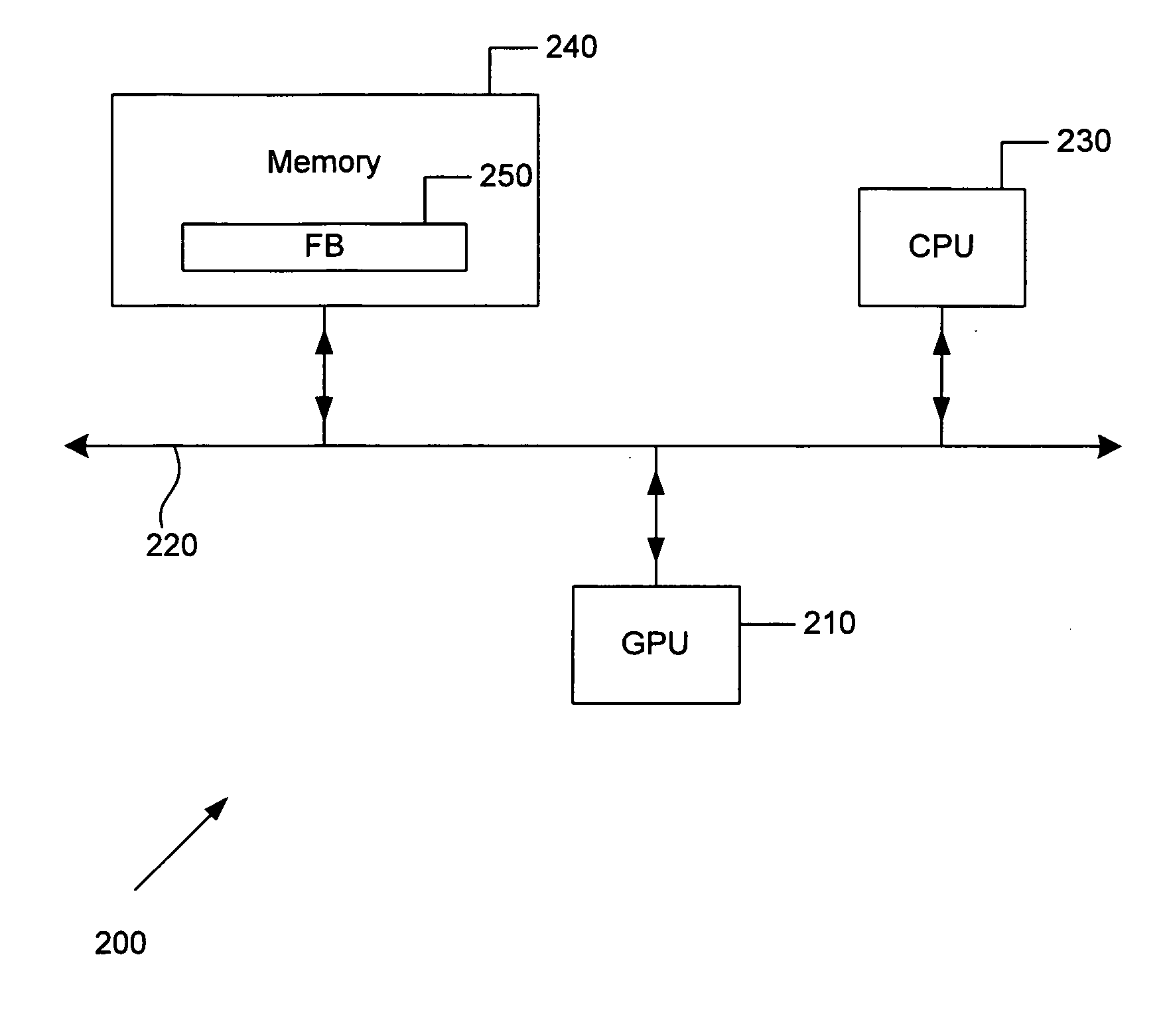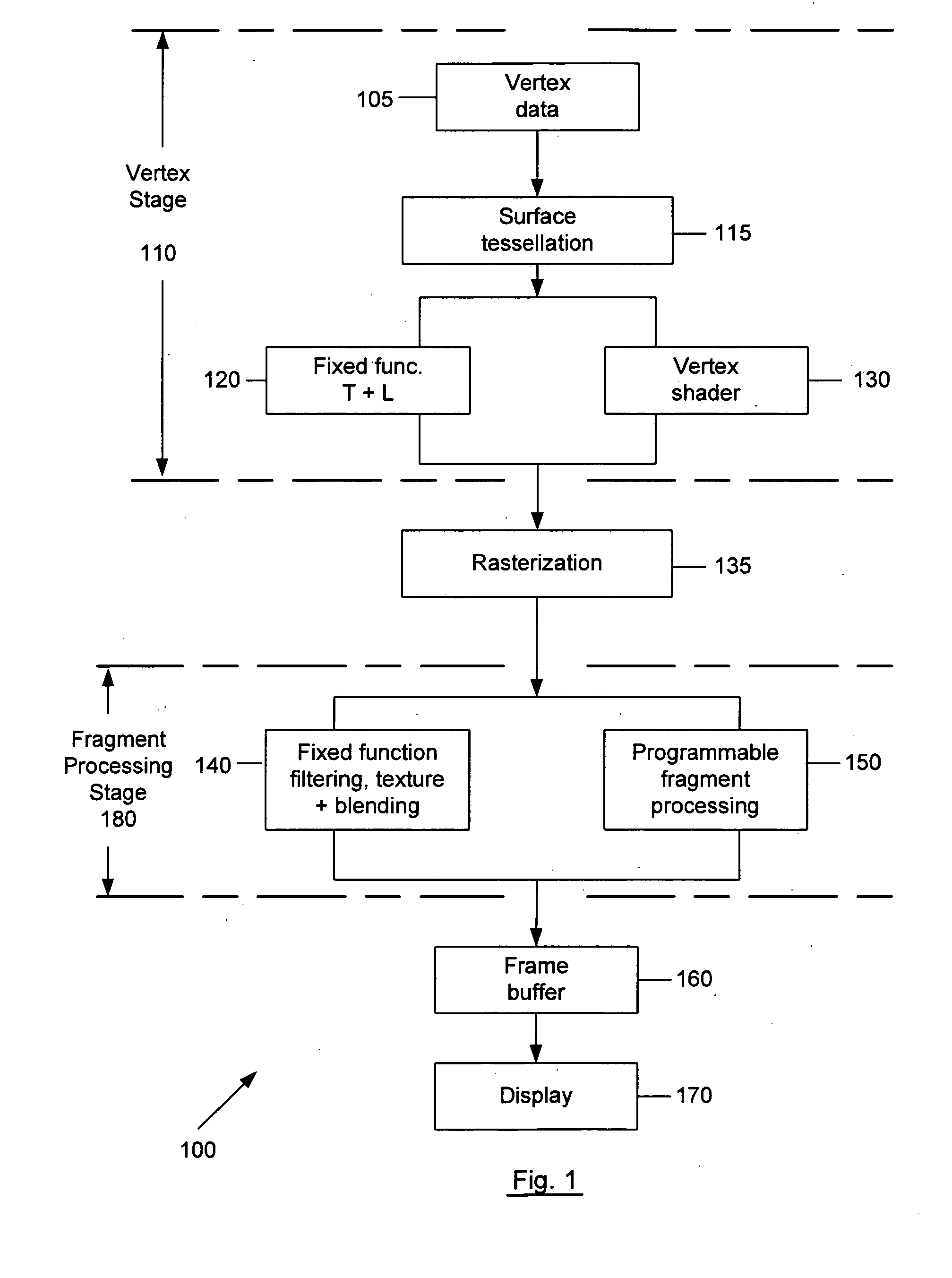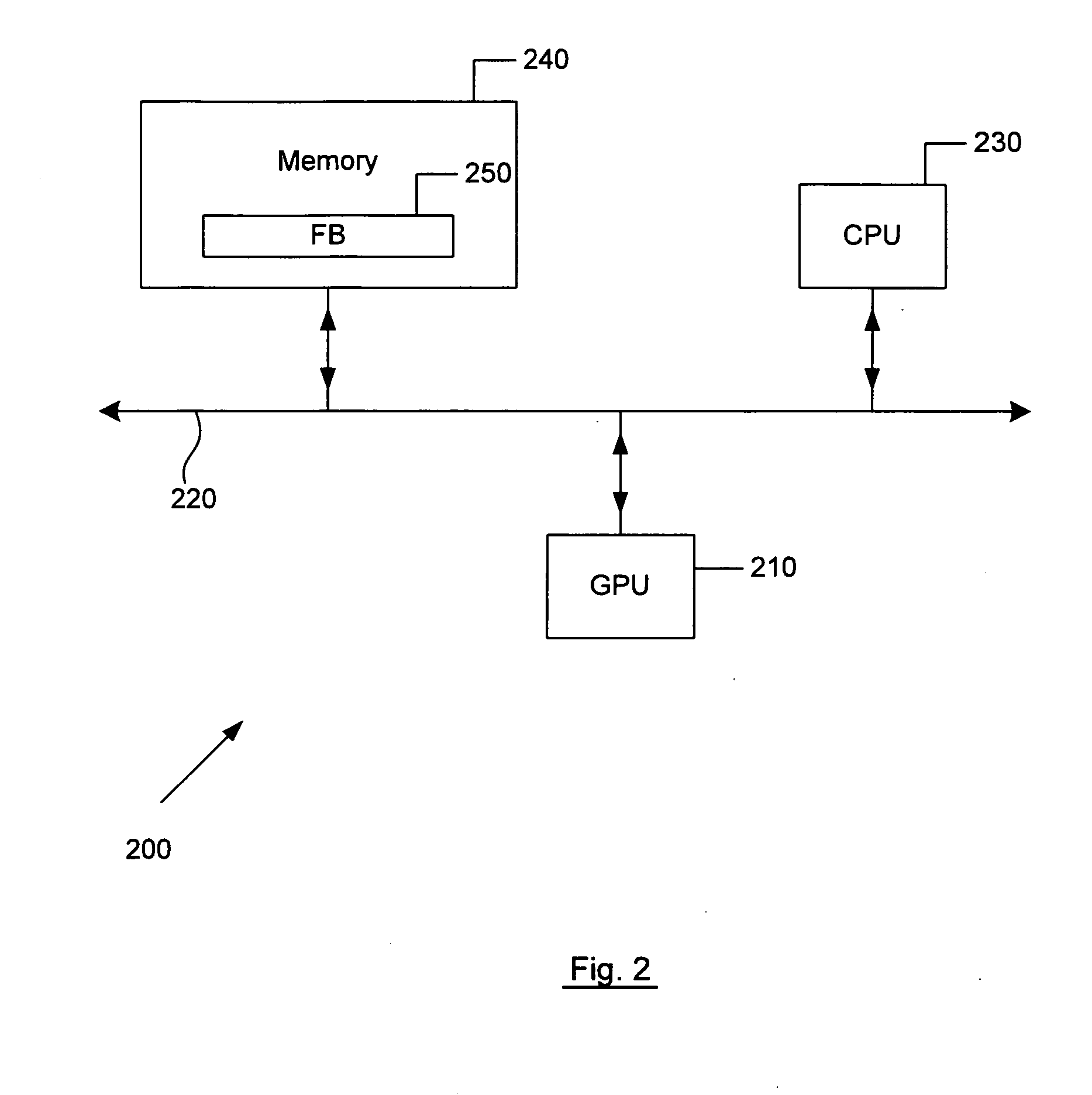Load balancing
a load balancing and load technology, applied in the field of load balancing, can solve the problems of limited dedicated graphics hardware and the potential to affect the quality of graphics
- Summary
- Abstract
- Description
- Claims
- Application Information
AI Technical Summary
Benefits of technology
Problems solved by technology
Method used
Image
Examples
embodiment 500
[0031] As with the vertex stage, the fragment processing stage has undergone an evolution from a fixed function unit, such as illustrated by block 140, to a programmable unit, such as illustrated by block 150. Thus, previously, texturing, filtering and blending were performed using fixed function state machines or similar hardware. As with vertex shaders, a pixel shader, such as 150, also referred to as a programmable fragment processing stage, permits customized programming control. Therefore, on a per pixel basis, a programmer is able to compute color and the like to produce desired customized visual effects. FIG. 5 is a block diagram illustrating an embodiment of a typical pixel shader or fragment processing stage. Similar to its counterpart in the vertex stage, embodiment 500 includes fragment input data 510, fragment program 520, and fragment output data 530. Likewise, this stage includes texture memory 540 and temporary registers 550. In this context, texture memory refers to ...
third embodiment
[0035] Likewise, a third embodiment or instantiation of dedicated graphics hardware shall be referred to here as a programmable streaming processor. A programmable streaming processor comprises a processor in which a data stream is applied to the processor and the processor executes similar computations or processing on the elements of the data stream. The system may execute, therefore, a program or kernel by applying it to the elements of the stream and by providing the processing results in an output stream. In this context, likewise, a programmable streaming processor which focuses primarily on processing streams of fragments comprises a programmable streaming fragment processor. In such a processor, a complete instruction set and larger data types may be provided. It is noted, however, that even in a streaming processor, loops and conditional branching are typically not capable of being executed without intervention originating external to the dedicated graphics hardware, such a...
embodiment 200
[0036]FIG. 2 is a schematic diagram illustrating an embodiment 200 comprising a system that may employ dedicated graphics hardware, such as, for example, GPU 210. It is noted that FIG. 2 is a simplified diagram for ease of discussion and illustration. Therefore, aspects such as a memory controller / arbiter, interface units to implement standard interface protocols, such as AGP and / or PCI, display devices, input devices, and the like have been omitted so as not to unnecessarily obscure the discussion.
[0037] In this particular embodiment, GPU 210 may comprise any instantiation of a programmable GPU, such as, for example, one of the three previously described embodiments, although for the purposes of this discussion, it is assumed that GPU 210 comprises a programmable floating point GPU. Likewise, it is, of course, appreciated that the claimed subject matter is not limited in scope to only the three types of GPUs previously described. These three are merely provided as illustrations of ...
PUM
 Login to View More
Login to View More Abstract
Description
Claims
Application Information
 Login to View More
Login to View More - R&D
- Intellectual Property
- Life Sciences
- Materials
- Tech Scout
- Unparalleled Data Quality
- Higher Quality Content
- 60% Fewer Hallucinations
Browse by: Latest US Patents, China's latest patents, Technical Efficacy Thesaurus, Application Domain, Technology Topic, Popular Technical Reports.
© 2025 PatSnap. All rights reserved.Legal|Privacy policy|Modern Slavery Act Transparency Statement|Sitemap|About US| Contact US: help@patsnap.com



